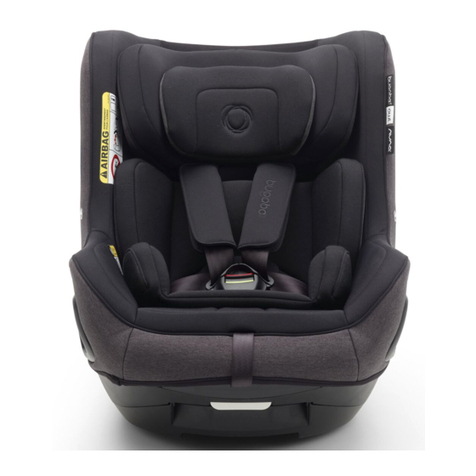
1
CONTENTS
Quick Reference & Pictorial Guide - Rear facing Vehicle Belts ..................... 2 - 4
Quick Reference & Pictorial Guide - Rear facing ISOFIX ................................ 5 - 7
Quick Reference & Pictorial Guide - Forward facing Vehicle Belts ............ 8 - 11
Quick Reference & Pictorial Guide - Forward facing ISOFIX .................... 12 - 14
WARNINGS ..................................................................................................... 15
ADDITIONALWARNINGS..........................................................................16&17
Features .................................................................................................... 18 & 19
REAR FACING INSTALLATION
Recline Angle ................................................................................................. 20
Installing the Restraint using Vehicle Belts ................................................... 21
Vehicle Belts CHECKLIST ........................................................................22 & 23
Installing the Restraint using ISOFIX compatible connectors ................. 24 & 25
ISOFIX CHECKLIST ..................................................................................26 & 27
FORWARD FACING INSTALLATION
Recline Angle ................................................................................................. 28
Installing the Restraint using Vehicle Belts ........................................... 29 & 30
Vehicle Belt CHECKLIST ......................................................................... 31& 32
Installing the Restraint using ISOFIX compatible connectors ......................... 33
ISOFIX CHECKLIST ................................................................................. 34 & 35
TOP TETHER WARNINGS ............................................................................... 36
Features ......................................................................................................... 37
Tether Strap Use ........................................................................................ 38 & 39
Tether Anchorage Installation .................................................................. 40 - 42
IMPORTANT:
Before installation and use of this child restraint check
that it is suitable for the size of your child.
Refer to the shoulder height label information on pages 15
and 25 of the USE Instructions.
DO NOT USE THIS CHILD RESTRAINT UNTIL YOU HAVE READ AND
UNDERSTOOD THE INSTRUCTIONS IN THIS USER GUIDE AND IN YOUR
VEHICLE OWNERS MANUAL
Distributed by Baby Bunting Pty. Ltd.
For after sales service, please contact:
APB Pty Ltd , 82 Bellingara Road, Miranda NSW 2228
Ph: 02 8543 5570
Which way to face the restraint?
FRONT OF VEHICLE
Install facing the back of the ve-
hicle for babies and small toddlers.
See USE Instructions page 15.
Install facing the front of the vehicle
for bigger toddlers and small children.
See USE Instructions page 25.



















































